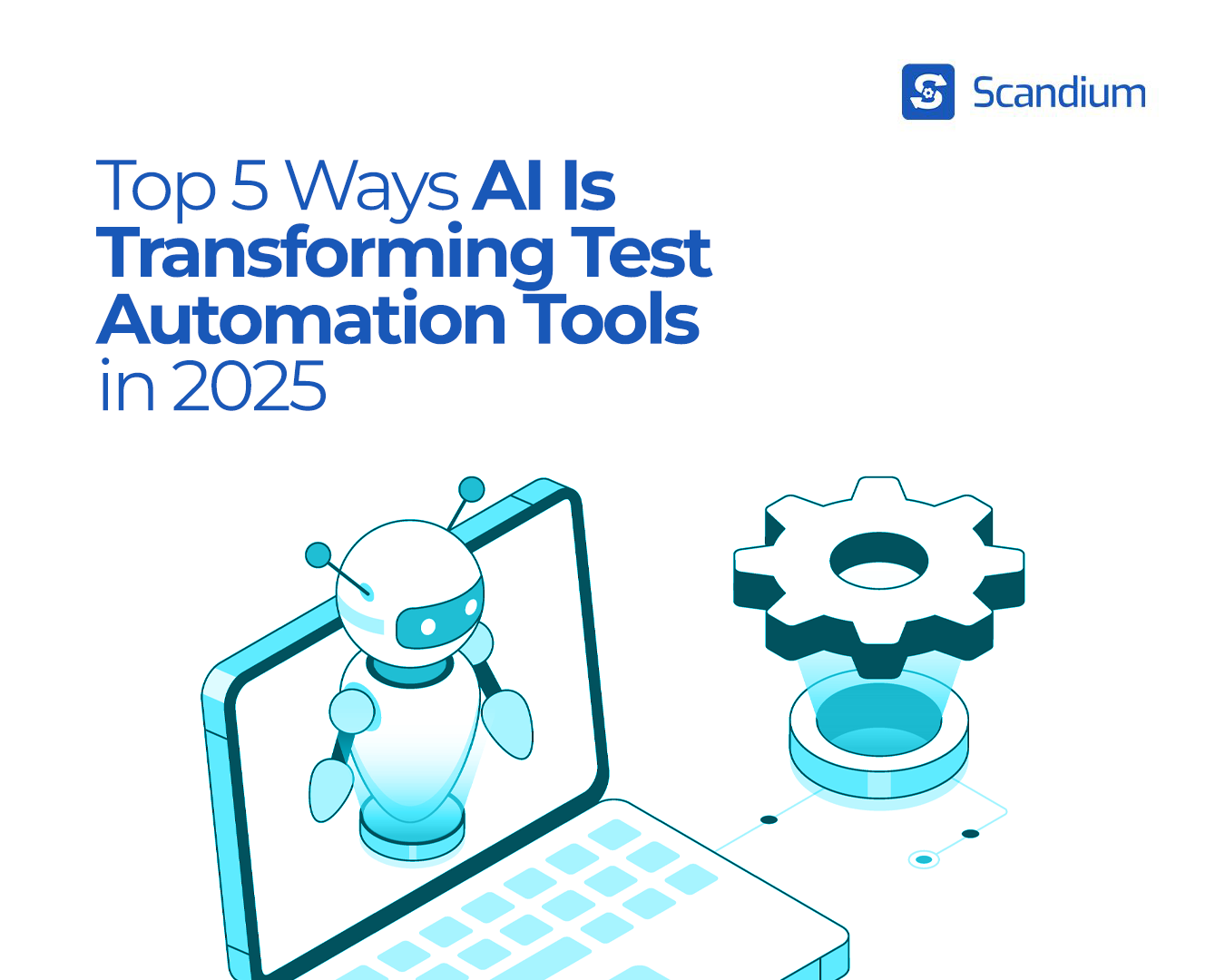
If 2025 had a theme for QA teams, it would be “no more mind-numbing testing.” AI isn’t hype anymore, it’s reshaping how test automation works. This shift is not just about speed or efficiency. It’s about finally getting out of the cycle of brittle scripts, endless maintenance, and manual test writing. We’re entering the era of intelligent testing.
Here’s a deep exploration into how AI is transforming the testing game and why it’s time to pay attention.
1. AI Writes Tests So You Don’t Have To
The old way? Spend hours converting user stories into test steps, then tweak them for edge cases. The new way? Feed AI your test case description or your workflow, and it generates test steps automatically. Even better, it learns from previous test patterns, business logic, and user flows to generate smarter, more accurate test scripts over time.
Some tools today use NLP (natural language processing) to convert written scenarios into executable tests. Others record your actions and use AI to create maintainable test logic behind the scenes.
Why it matters:
Teams now spend less time writing and rewriting tests. QA becomes more about strategy and insight, not repetitive scripting.
Bonus: Even non-technical teammates can now co-own tests.
2. Tests That Heal Themselves
You know the pain: one CSS change, and half your regression suite breaks. But in 2025, test automation tools powered by AI don’t just break, they adapt. When a selector changes, the tool intelligently finds the new element using historical context, visual hierarchy, and other cues.
This “self-healing” ability reduces the need for constant maintenance. Your tests stay green longer. Teams ship faster.
Why it matters:
Fewer broken tests = faster builds, fewer delays, and more trust in your test automation tool.
Pro tip: Look for tools that give you visibility into how the AI healed the test, so you can always override if needed.
3. Smarter Debugging with AI
When a test fails, AI doesn’t just show you a red flag, it investigates. It checks version history, logs, UI state, and known issues to pinpoint what went wrong. In some tools, it’ll even suggest fixes, whether it’s waiting for a page load, adjusting a click action, or skipping flaky elements.
AI-based diagnostics is turning testers into faster problem-solvers, not just error log readers.
Why it matters:
You spend less time guessing and more time solving. QA teams now move closer to becoming trusted quality advisors.
4. Prioritized Testing with Risk-Based Insights
Not all features deserve equal test attention. But how do you know where to focus? AI helps by analyzing app usage, code changes, and bug frequency. It then suggests where tests are most critical.
Think of it like predictive QA: if your checkout page saw major refactors, AI knows it’s riskier and prioritizes those tests first.
Why it matters:
You reduce test bloat and spend time where it counts. Your CI pipelines run faster, with smarter coverage.
In 2025: Test coverage isn’t just about quantity, it’s about relevance.
5. Testing is Now a Team Sport
AI + no-code means more people can join the QA effort. Product managers can build flow-based tests. Customer support can validate edge cases. Business analysts can ensure compliance flows are working.
In Scandium, for example, users can record website interactions and automatically turn them into tests. AI suggests dynamic data inputs, validates dropdown logic, and even handles emails and SMS testing.
Why it matters:
QA becomes embedded across the team, not siloed. More contributors means better test coverage and shared ownership of quality.
Future-ready teams are already onboarding entire squads, not just testers, to test automation tools.
What This Means for the Future of Test Automation
AI isn’t just augmenting testers, it’s making testing fundamentally more intelligent. We’re seeing automation that thinks, adapts, and collaborates.
Test automation in 2025 looks like this:
- Tests generate themselves from descriptions and flows.
- Failures come with suggestions and explanations.
- Maintenance drops by 40-60% due to smart healing.
- Test planning is driven by risk, not guesswork.
- Teams outside QA contribute easily thanks to no-code AI.
If your current test automation tool doesn’t do these things, it’s already behind.
What You Can Do Right Now
- Evaluate tools that support AI-based test generation.
- Experiment with test healing and smart debugging features.
- Empower your PMs or devs to create tests through intuitive interfaces.
- Track how much test maintenance you’re doing and what AI can take off your plate.
You don’t need a total overhaul. Start small. Add AI-powered features where they give you quick wins.
Want to see a tool that’s blending AI, no-code, and test automation in one workspace? Book a Demo with Scandium today.
Explore Scandium, the test automation tool that is helping teams automate faster, test smarter, and collaborate better through AI-powered No-code Test Automation.
